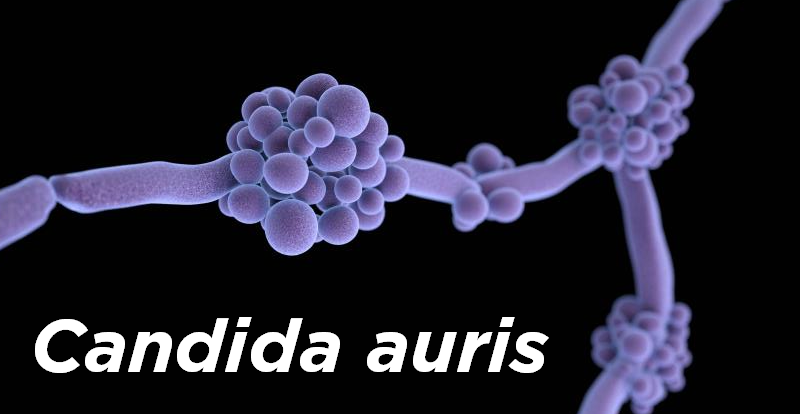Health officials said a drug-resistant “superbug” fungus spreading in two hospitals and a nursing home in the U.S.
The “superbug” outbreaks were reported in a Washington, D.C., nursing home and at two Dallas-area hospitals, the Centers for Disease Control and Prevention reported (CDC).
Since January 2021, the Antibiotic Resistance Laboratory Network has detected independent clusters of pan-resistant or echinocandin-resistant cases in Texas and the District of Columbia (DC), CDC said.
According to CDC, each cluster involved common health care encounters and no known previous echinocandin exposure, suggesting transmission of pan- and echinocandin-resistant strains for the first time in the United States.
Candida auris is an emerging, often multidrug-resistant yeast that is highly transmissible, resulting in health care–associated outbreaks, especially in long-term care facilities, CDC says.
According to the CDC report, among 101 clinical and screening cases of C. auris† in DC during January–April 2021, three had an isolate that was pan-resistant. All resistant isolates were identified through skin colonization screening at one long-term care facility for severely ill patients, including those requiring mechanical ventilation.
Among 22 clinical and screening cases of C. auris in Texas during the same period, two were pan-resistant and five were resistant to both echinocandins and fluconazole. These seven cases were identified in patients who were cared for at two facilities that share patients in the same city; two patients were at a long-term acute care hospital, three at a short-term acute care hospital, and two at both facilities. Among these cases, four were identified through colonization screening and three through clinical isolates (two blood isolates and one wound isolate).
Know about Candida auris via CDC:
Why is Candida auris a problem?
- It causes serious infections. C. auris can cause bloodstream infections and even death, particularly in hospital and nursing home patients with serious medical problems. More than 1 in 3 patients with invasive C. auris infection (for example, an infection that affects the blood, heart, or brain) die.
- It’s often resistant to medicines. Antifungal medicines commonly used to treat Candida infections often don’t work for Candida auris. Some C. auris infections have been resistant to all three types of antifungal medicines.
- It’s becoming more common. Although C. auris was just discovered in 2009, it has spread quickly and caused infections in more than a dozen countries.
- It’s difficult to identify. C. auris can be misidentified as other types of fungi unless specialized laboratory technology is used. This misidentification might lead to a patient getting the wrong treatment.
- It can spread in hospitals and nursing homes. C. auris has caused outbreaks in healthcare facilities and can spread through contact with affected patients and contaminated surfaces or equipment. Good hand hygiene and cleaning in healthcare facilities is important because C. auris can live on surfaces for several weeks
How do I know if I have a Candida auris infection?
C. auris is still rare in the United States. People who get invasive Candida infections are often already sick from other medical conditions, so it can be difficult to know if you have a C. auris infection. The most common symptoms of invasive Candida infection are fever and chills that don’t improve after antibiotic treatment for a suspected bacterial infection. Only a laboratory test can diagnose C. auris infection. Talk to your healthcare provider if you believe you have a fungal or healthcare-associated infection.
Stopping the spread of Candida auris
CDC is working with public health partners, healthcare personnel, and laboratories to stop the spread of C. auris in healthcare settings. Here’s how CDC is asking everyone to help:
- Family members and other close contacts of patients with C. auris
- Clean your hands with hand sanitizer or soap and water before and after touching a patient with C. auris or equipment in his or her room.
- Remind healthcare personnel to clean their hands.
- Laboratory staff, healthcare personnel, and public health officials
- Know when to suspect C. auris and how to properly identify it.
- Report cases quickly to public health departments.
- For healthcare personnel, clean hands correctly and use precautions like wearing gowns and gloves to prevent spread.
- Clean patient rooms thoroughly with a disinfectant that works against C. auris.
- Investigate C. auris cases quickly and determine additional ways to prevent spread.
- See Recommendations for Identification, Treatment, and Infection Prevention and control of Candida auris
A global media for the latest news, entertainment, music fashion, and more.




